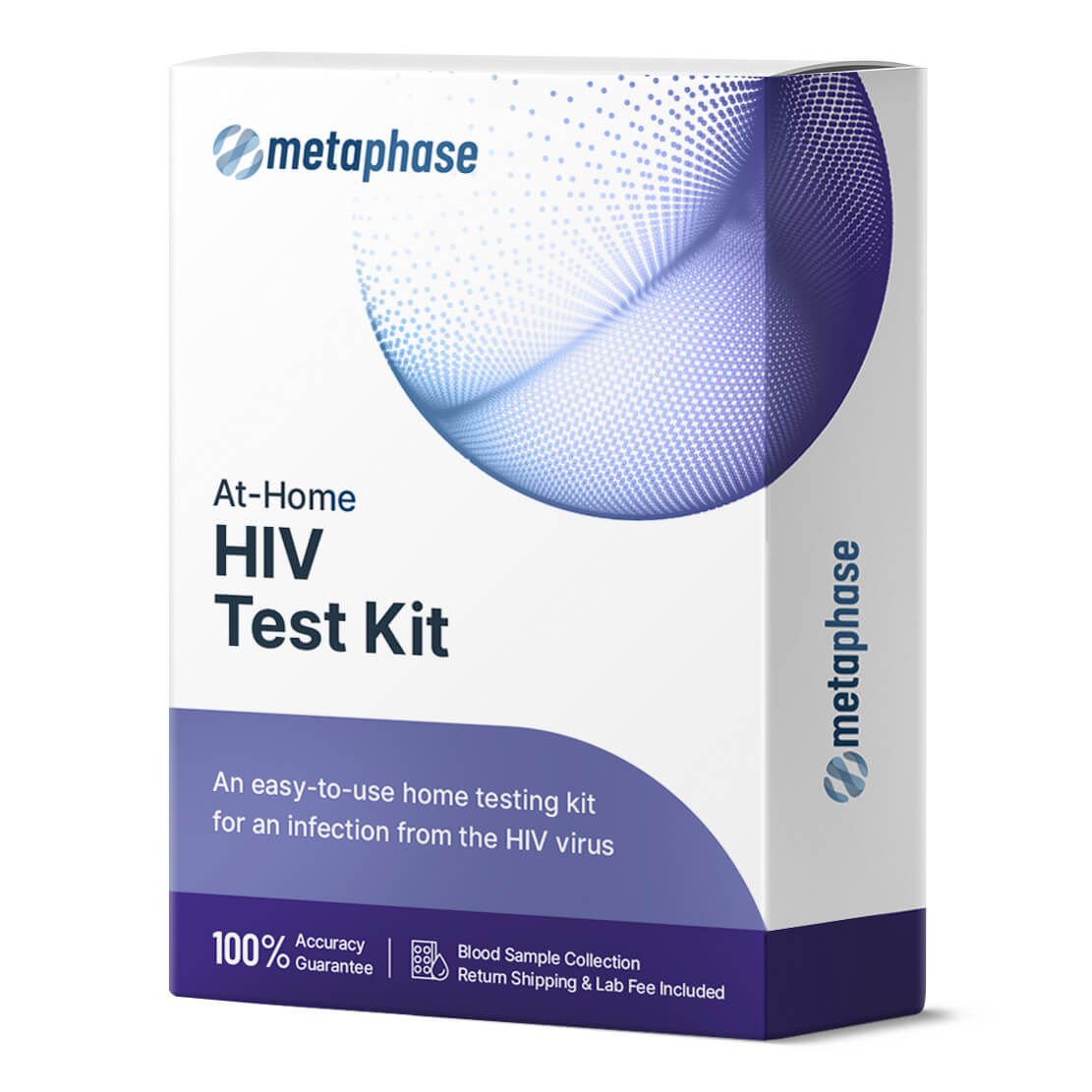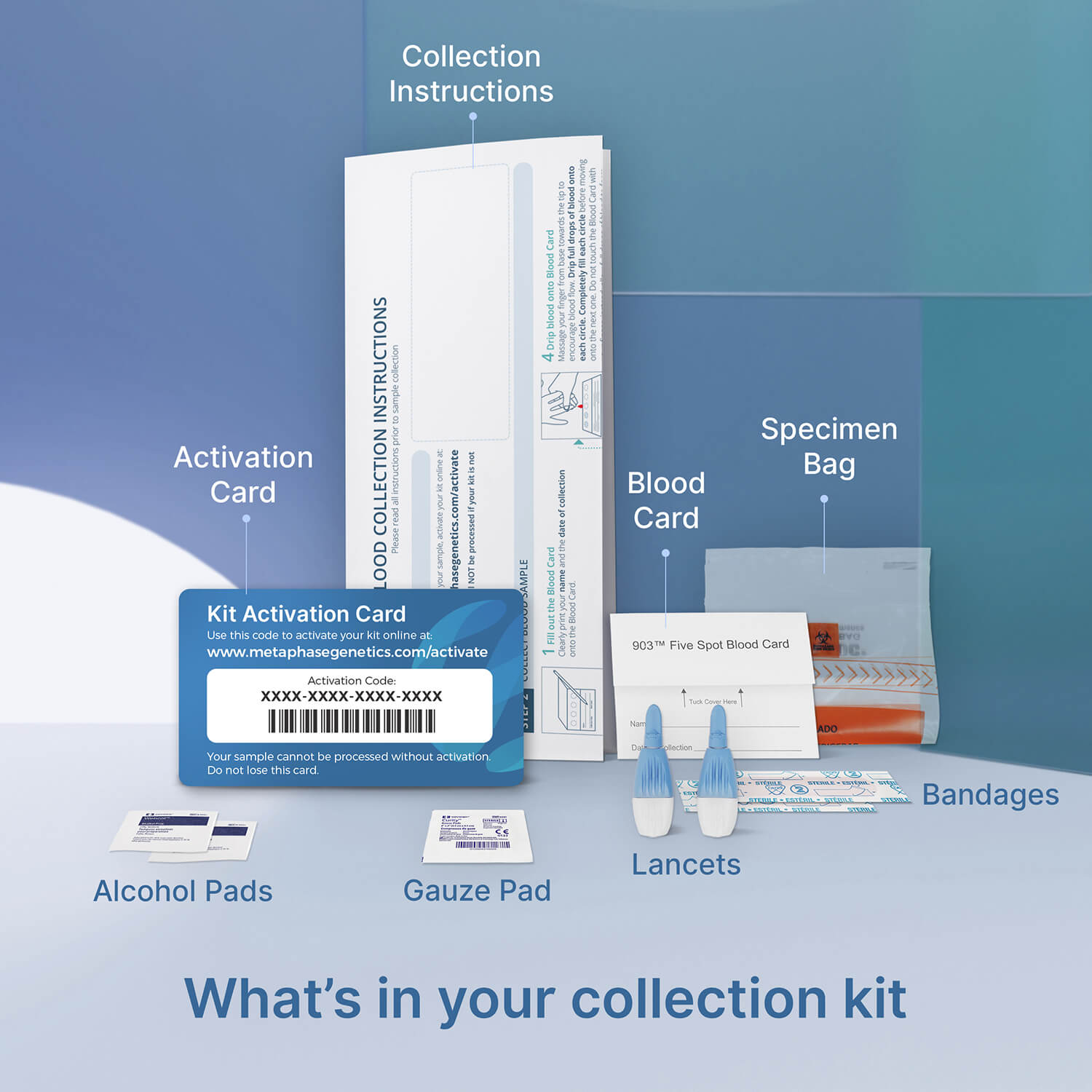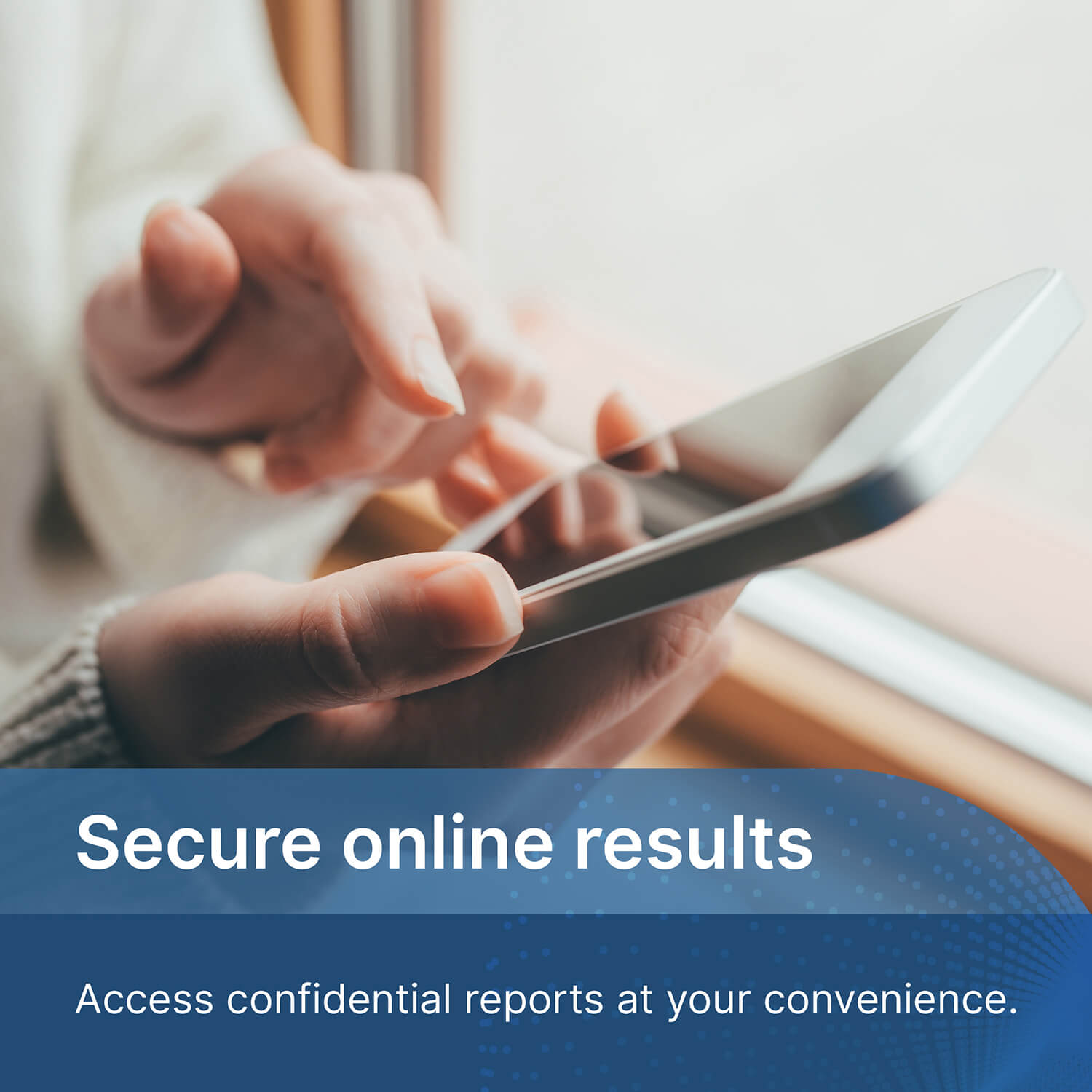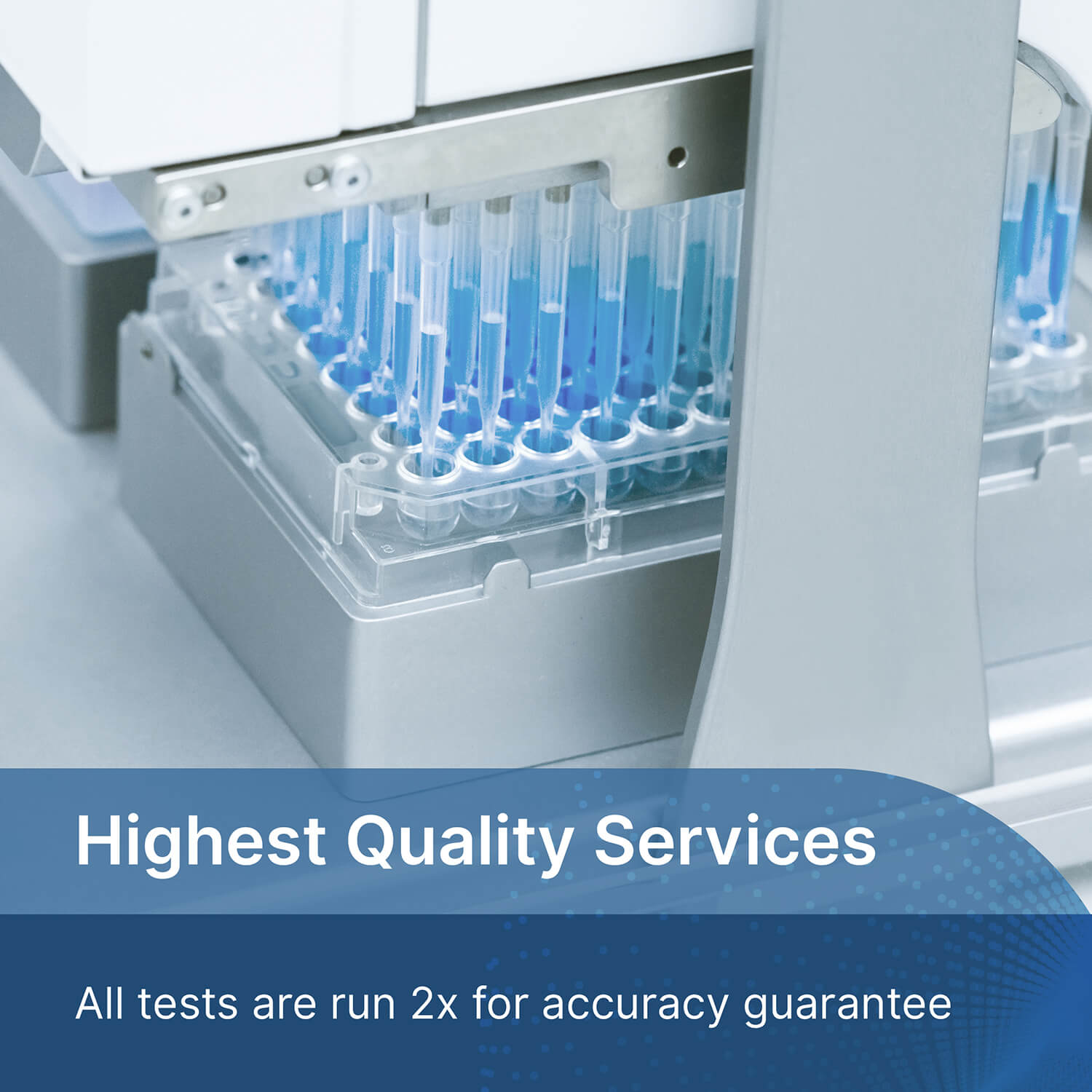HIV Test
$69.00
Human immunodeficiency virus (HIV) is a blood-borne virus that spreads through contact or transfer of blood, semen, pre-ejaculate, and vaginal fluids. This 4th generation at-home STD test is the most advanced test to accurately detect an HIV infection.
STDs tested:
- HIV1 and HIV2 antibodies
- p24 antigen
- Collection method: Blood
- Results in 1-3 business days
Out of stock
Description
Individuals aged between 13 and 64 years should undergo at least one HIV test as part of their routine healthcare. Those belonging to high-risk populations such as men who have sex with men, injecting drug users, and sex workers should be tested annually for HIV. Pregnant women should also undergo HIV screening as part of their prenatal screening tests. A fourth-generation HIV test, which is a laboratory test, is recommended for its high accuracy and ability to detect HIV at an earlier stage compared to older rapid HIV tests.
It is important to note that a “window period” of 18-45 days exists during which HIV antigens and antibodies are not detectable. Individuals who suspect they have been exposed to HIV should get tested immediately and then again at six weeks, three months, and six months to confirm their HIV status, as the initial test may show up as negative even if they are infected.
Description
Individuals aged between 13 and 64 years should undergo at least one HIV test as part of their routine healthcare. Those belonging to high-risk populations such as men who have sex with men, injecting drug users, and sex workers should be tested annually for HIV. Pregnant women should also undergo HIV screening as part of their prenatal screening tests. A fourth-generation HIV test, which is a laboratory test, is recommended for its high accuracy and ability to detect HIV at an earlier stage compared to older rapid HIV tests.
It is important to note that a “window period” of 18-45 days exists during which HIV antigens and antibodies are not detectable. Individuals who suspect they have been exposed to HIV should get tested immediately and then again at six weeks, three months, and six months to confirm their HIV status, as the initial test may show up as negative even if they are infected.
Description
Individuals aged between 13 and 64 years should undergo at least one HIV test as part of their routine healthcare. Those belonging to high-risk populations such as men who have sex with men, injecting drug users, and sex workers should be tested annually for HIV. Pregnant women should also undergo HIV screening as part of their prenatal screening tests. A fourth-generation HIV test, which is a laboratory test, is recommended for its high accuracy and ability to detect HIV at an earlier stage compared to older rapid HIV tests.
It is important to note that a “window period” of 18-45 days exists during which HIV antigens and antibodies are not detectable. Individuals who suspect they have been exposed to HIV should get tested immediately and then again at six weeks, three months, and six months to confirm their HIV status, as the initial test may show up as negative even if they are infected.
Our testing laboratory is AABB Accredited, ISO/IEC 17025 Certified and participates in the CAP proficiency testing program.
What’s included in the test?
• HIV p24 antigen
Antigens are foreign substances that trigger an immune response in the body. In the case of HIV, the p24 antigen is a viral core protein that can be detected in the blood of infected individuals within 2-3 weeks of exposure, making it a useful tool for diagnosing HIV in the early stages of infection. However, as the body produces antibodies against the p24 antigen during its immune response to HIV, the p24 antigen becomes undetectable after 40-45 days of exposure. Therefore, relying solely on the detection of the p24 antigen is not reliable for diagnosing HIV after the early stages of infection. Nevertheless, the 4th generation HIV test available here can detect both the p24 antigen and antibodies to HIV-1 and HIV-2, making it a more accurate and reliable test for diagnosing HIV infection.
• HIV-1 and HIV-2 antibodies
Following infection with HIV, the immune system produces antibodies that are specific to HIV. These antibodies can take between 23-90 days to be detected in the blood and can be detected for the rest of an individual’s life (in the form of IgG antibodies). Tests that only detect antibodies (such as rapid HIV tests) have a long “window period” after exposure, up to three months, during which an individual may be infected with HIV but still test negative for the virus. The 4th generation HIV test, however, can detect both the HIV antibodies and the HIV p24 antigen that can be detected much earlier in infected individuals, reducing the “window period” to only 18-45 days post-exposure. This earlier detection can significantly reduce the risk of transmitting the virus to others and can provide a more accurate diagnosis of HIV infection.
What’s included in the test?
• HIV p24 antigen
Antigens are foreign substances that trigger an immune response in the body. In the case of HIV, the p24 antigen is a viral core protein that can be detected in the blood of infected individuals within 2-3 weeks of exposure, making it a useful tool for diagnosing HIV in the early stages of infection. However, as the body produces antibodies against the p24 antigen during its immune response to HIV, the p24 antigen becomes undetectable after 40-45 days of exposure. Therefore, relying solely on the detection of the p24 antigen is not reliable for diagnosing HIV after the early stages of infection. Nevertheless, the 4th generation HIV test available here can detect both the p24 antigen and antibodies to HIV-1 and HIV-2, making it a more accurate and reliable test for diagnosing HIV infection.
• HIV-1 and HIV-2 antibodies
Following infection with HIV, the immune system produces antibodies that are specific to HIV. These antibodies can take between 23-90 days to be detected in the blood and can be detected for the rest of an individual’s life (in the form of IgG antibodies). Tests that only detect antibodies (such as rapid HIV tests) have a long “window period” after exposure, up to three months, during which an individual may be infected with HIV but still test negative for the virus. The 4th generation HIV test, however, can detect both the HIV antibodies and the HIV p24 antigen that can be detected much earlier in infected individuals, reducing the “window period” to only 18-45 days post-exposure. This earlier detection can significantly reduce the risk of transmitting the virus to others and can provide a more accurate diagnosis of HIV infection.
At-Home DNA Testing Steps
STEP 1
Order Kit
Order the private DNA test kit online.
STEP 2
Collect Samples
Follow the easy instructions for collecting a mouth swab sample from the participants. The sample is collected in just seconds by rubbing the swabs provided in the kit gently inside the mouth.
STEP 3
Receive Results
After sample collection, return the samples to our laboratory using the return packaging included in your test kit. Results are available online. You are welcome to call our laboratory at any time to check on your test and to get preliminary results over the telephone using your password and file number. Official results documents are sent to you by mail or email after the test is complete.





